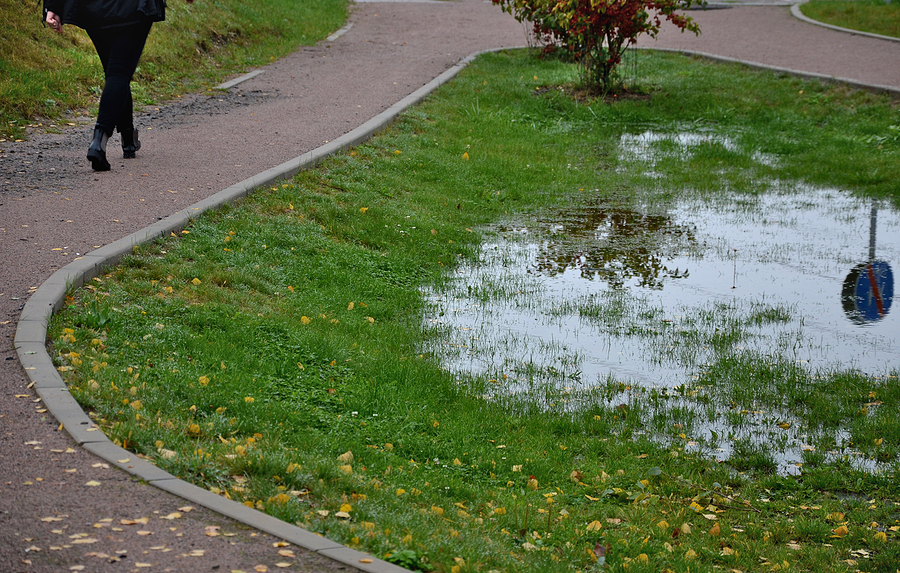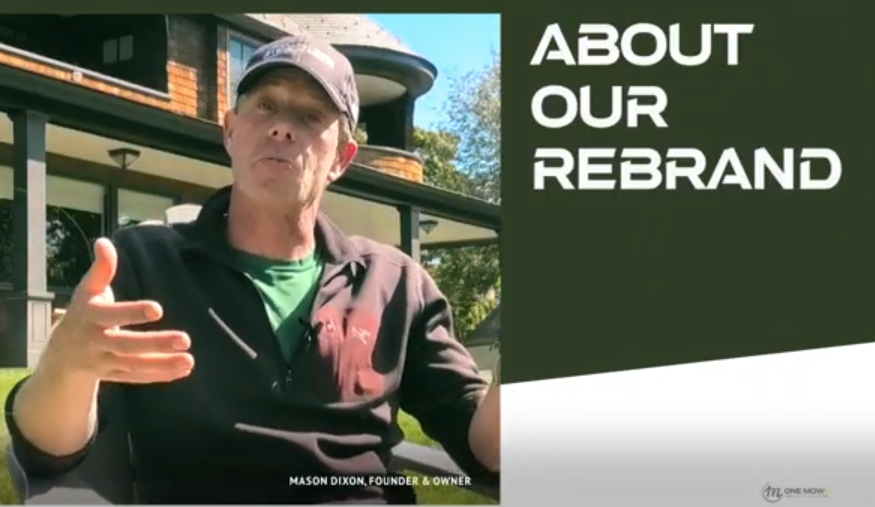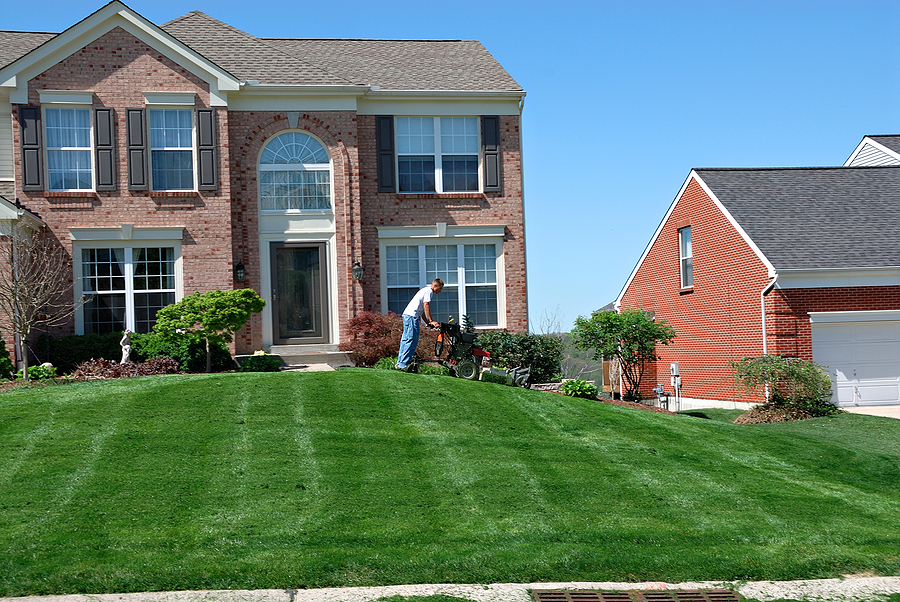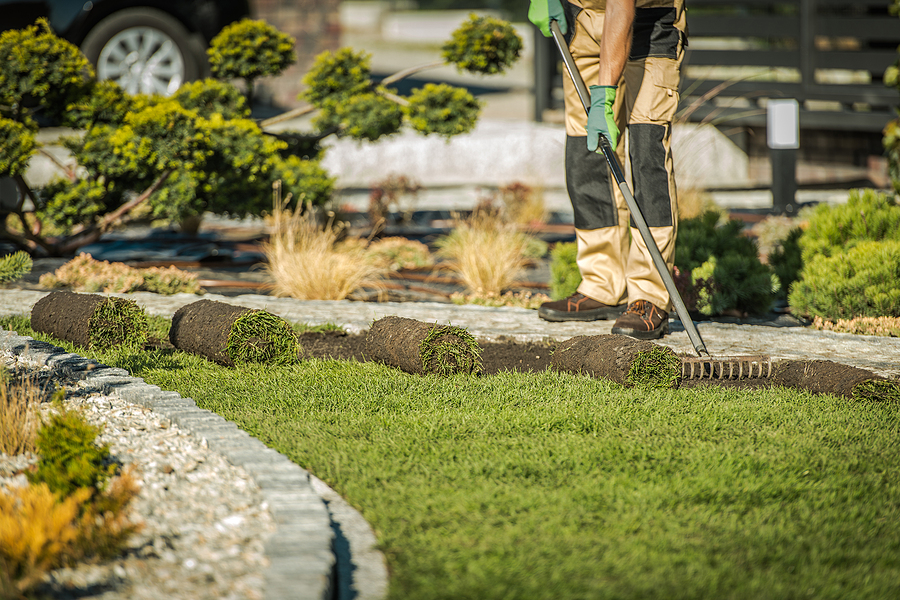Every homeowner in Kennebunk wants a yard that looks healthy, welcoming, and well cared for. But even with the best intentions, it’s easy to slip into habits that do more harm than good. The truth is, many of the most common landscaping mistakes happen because people don’t realize how much climate, soil, and seasonal changes play a role in yard care. If you’ve ever wondered why your lawn isn’t thriving despite your efforts, it may be time to take a closer look at your routine.
At One Mow, Co., we’ve seen it all, everything from patchy grass to overgrown shrubs to flowerbeds that can’t seem to survive more than a season. The good news? With the right knowledge, you can avoid the biggest pitfalls and keep your outdoor space looking its best year after year.
Let’s break down some of the common landscaping mistakes in Maine, especially here in Kennebunk, and how you can avoid them.
Overwatering or Underwatering
Watering may seem straightforward, but it’s one of the top causes of lawn stress. Many homeowners water too often, drowning the roots, while others forget to water during dry spells, leaving the grass brittle and brown. In Maine, where rainfall can vary widely by season, you need a flexible approach.
The trick is to water deeply but infrequently. This encourages grass roots to grow deeper into the soil, making your lawn more resilient. A good rule of thumb is about an inch of water per week, but you’ll want to adjust depending on rainfall. Avoid watering in the middle of the day when evaporation is at its highest. Early morning or evening watering is far more effective.
According to the U.S. Environmental Protection Agency (EPA), overwatering lawns not only wastes water used outdoors but also contributes to runoff that can carry fertilizers and pesticides into local waterways
Mowing Mistakes
Lawn mowing might feel like the simplest task in landscaping, but it’s where we see some of the most consistent mistakes. Many homeowners in Kennebunk cut their grass too short, thinking it will reduce how often they need to mow. In reality, scalping the lawn weakens it, leaving it vulnerable to weeds, pests, and disease.
The ideal mowing height for most grasses in Maine is around three inches. Keeping it at this height shades the soil, prevents weed seeds from germinating, and protects roots from heat. Another mistake is using dull mower blades. Dull blades tear grass instead of cutting it cleanly, leaving ragged edges that turn brown. Make sure your mower is sharpened at least once a season for a clean, healthy cut.
Planting Without a Plan
Impulse buying at garden centers is a landscaping trap. You see a beautiful plant, bring it home, and stick it in the ground without thinking about how big it will grow or whether it’s suited for Maine’s climate. Over time, this can lead to overcrowded beds, shading issues, and plants that simply won’t survive.
Before planting, consider spacing, sunlight needs, and long-term growth. Native plants are often the best choice in Kennebunk because they’re naturally adapted to local conditions. They’ll thrive with less maintenance and provide food and habitat for pollinators.
Ignoring Soil Health
Your lawn and plants are only as healthy as the soil beneath them. One of the most overlooked landscaping mistakes is assuming that any soil will do. In reality, Maine soils can be rocky, sandy, or compacted. These are conditions that make it harder for roots to thrive.
Regular soil testing can reveal deficiencies in nutrients or pH imbalances. Adding compost or organic matter improves soil structure, while aeration helps oxygen and water reach roots more effectively. Investing in soil health now saves you time and frustration down the line.
Forgetting About Seasonal Maintenance
Landscaping in Kennebunk means working with four distinct seasons. One of the common landscaping mistakes in Maine is treating yard care the same way year-round. Spring is for cleaning up winter debris and preparing beds, summer requires consistent watering and mowing, fall is the time for fertilizing and aerating, and winter calls for protecting vulnerable plants.
Skipping these seasonal steps creates bigger problems later. For example, failing to aerate in the fall leads to compacted soil, while skipping fertilizer means your lawn struggles to green up in spring. Following a seasonal plan ensures your yard looks great all year.
Overusing Chemicals
It’s tempting to think more fertilizer, herbicide, or pesticide will solve every problem, but that’s one of the fastest ways to damage your lawn and garden. Over-fertilizing can burn grass and contaminate groundwater. Overusing weed killers can harm desirable plants, and too many pesticides can disrupt beneficial insects like bees and butterflies.
Instead, take a balanced approach. Fertilize only when needed, and consider organic or slow-release options. Use targeted weed treatments rather than blanket sprays. Integrated Pest Management (IPM) practices are especially useful in Maine, focusing on prevention and natural solutions before reaching for chemicals.
Neglecting Mulch
Mulch does more than make beds look neat. It helps regulate soil temperature, retain moisture, and suppress weeds. But homeowners often skip this step or apply mulch incorrectly. Too little mulch leaves soil exposed, while too much creates a “mulch volcano” around plants, suffocating roots.
The sweet spot is two to three inches spread evenly across beds, keeping it pulled slightly away from plant stems. Organic mulches like bark or shredded leaves also break down over time, enriching the soil naturally.
Not Thinking About Long-Term Growth
Another mistake is underestimating how big plants will get. A small shrub may look great near your walkway now, but in a few years, it could be blocking paths or windows. Trees planted too close to a house can create root issues and structural risks.
Always check the mature size of plants before adding them to your yard. Plan spacing with the future in mind. It’s easier to start with a smart layout than to remove or constantly trim back overgrown plants.
DIY Overload
There’s pride in tackling yard projects yourself, but sometimes homeowners bite off more than they can chew. Installing irrigation systems, laying patios, or handling major tree trimming can quickly become overwhelming—and costly if mistakes are made. Professional landscapers bring expertise, tools, and experience that ensure projects are done right the first time.
At One Mow, Co., we help Kennebunk homeowners find the right balance. Whether it’s routine lawn mowing, seasonal cleanups, or larger landscaping projects, our goal is to save you time and frustration while keeping your yard looking its best.
Avoiding Landscaping Mistakes Starts With a Plan
The truth is, most landscaping mistakes are avoidable with the right planning and a little help. By paying attention to watering, mowing, soil health, and seasonal care, you can create a yard that thrives in Kennebunk’s unique climate. And when you need professional guidance, we’re here to make the process stress-free.
Ready to avoid the most common landscaping mistakes and give your yard the care it deserves? Contact One Mow, Co. today at One Mow, Co. and let our team help you create a landscape you’ll love all year long.






